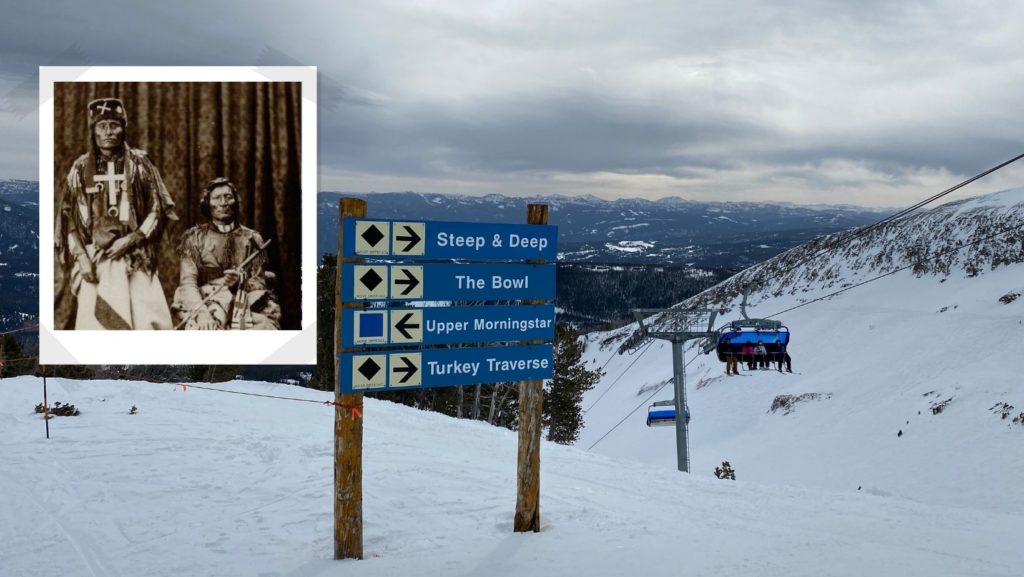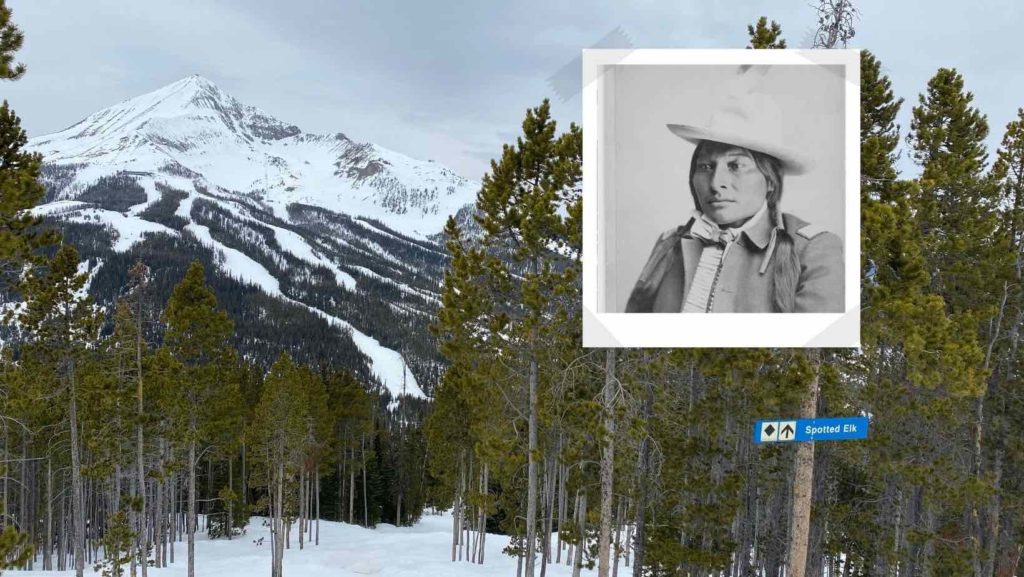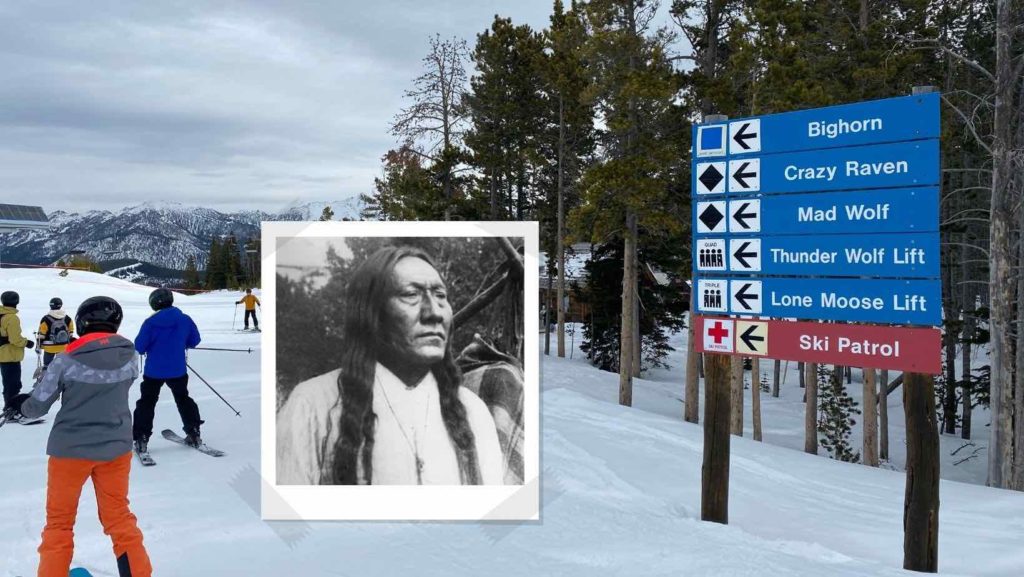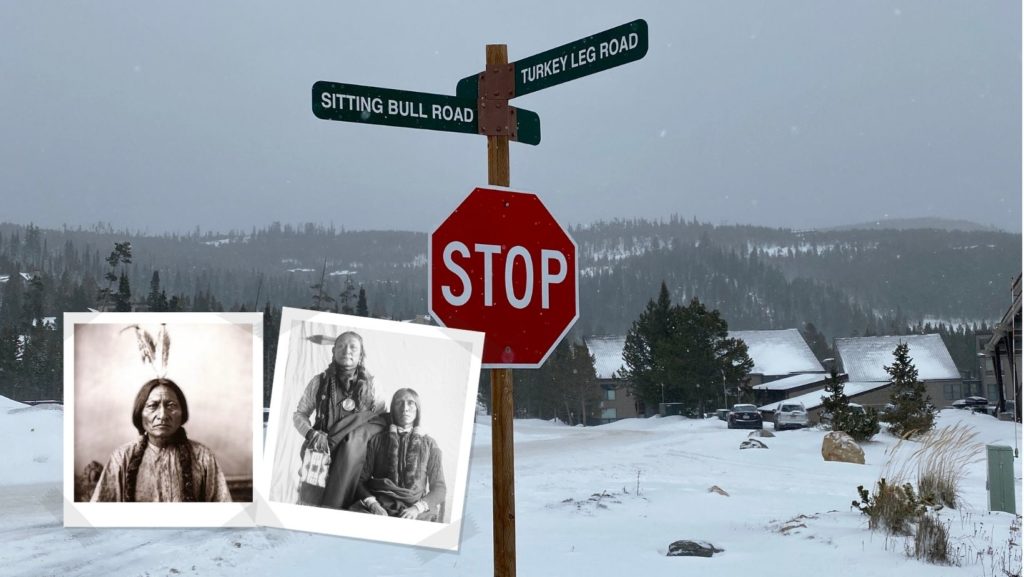By Mira Brody CONTENT MARKETING STRATEGIST
BIG SKY – Of its 5,800 skiable acres, possibly one of the longest runs at Big Sky Resort is the combined Upper and Lower Morning Star. Accessed via the Powder Seeker lift in the spacious and awe-inspiring Bowl, the blue groomer cruises below the A-Z Chutes and into a wide, playful alpine paradise. From there, it transitions into a smooth green run with unreal views of the surrounding landscape, all the way down to the base area.
While Morning Star may be the ski run on which you warm up or cool down your day of powder seeking, its name has Indigenous roots. In fact, there are a handful of ski runs across the resort named for Indigenous people, and with the help of local historian Jeffery Strickler, we pay homage to a few notables.
“I am a historian with a fascination with names,” said Strickler, who is the author of three local historical publications, including Big Sky’s contribution to the national Images of America series, which he co-authored with the Crail Ranch Homestead Museum’s Anne Marie Mistretta. “Names are more than just the lake that you’re fishing or the mountain that you climb. If you go into the basis of that name, where it came from, and put them all together, you end up with a little bit of history here and a little bit of history there, and you get a kaleidoscope of the country around us.”
Pieces of that kaleidoscope can be picked up on your next ski day, starting on Lone Mountain.
Morning Star (Dull Knife)
Northern Cheyenne

Morning Star, also known by his Lakota Sioux name, which translates to Dull Knife, was a chief of the band known as the Northern Eaters which resided on the northern Great Planes in the 19th century. Morning Star was known for his active resistance toward the U.S. Government and his determination is credited toward today’s continued existence of Northern Cheyenne homeland. Chief Dull Knife College, located in Lame Deer, Montana, where he was also laid to rest in 1883, is named in his honor.
Spotted Elk
Miniconjou Lakota

Spotted Elk, also known as Big Foot, was a chief of the Miniconjou Lakota remembered for his diplomatic work with other tribes as well as with the U.S. Government. When the government placed the Miniconjou on the Cheyenne River Indian Reservation in South Dakota, Spotted Elk encouraged his people to build sustainable methods of agriculture and education for Lakota children. Spotted Elk ski run is a playful glade run that branches off from the top of Andesite Mountain. It was formally named Wounded Knee for the massacre at which Spotted Elk was killed, but was later renamed.
Silver Knife
Penateka

Silver Knife (also translated to White Knife) was a Comanche chief of the Penateka, one of five prominent bands that resided near today’s Oklahoma. Although he was involved in raids in the southwest in the 1860s, he too was a powerful diplomat. He surrendered to the military at Fort Cobb, and his name inks notable treaties including the Treaty of Tehuacana Creek and the Medicine Lodge Treaty, which ultimately prevented further conflict to the Penateka people during the Red River War in 1873. Silver Knife ski run starts at the top of Andesite and leads to the base area by way of a wide, steep blue groomer with prominent views of the Spanish Peaks.
Mad Wolf
Pikuni Blackfeet

Mad Wolf was a prominent Blackfeet leader and orator in the mid 1850s with a character that Strickler describes as “wild and fierce” to the point that other tribes tried to avoid conflict with him. In the 17th century, the Blackfeet dominated a large swath of land that stretched from today’s Edmonton, Canada, to Glacier National Park, Yellowstone National Park and the Black Hills of South Dakota. Today, the Blackfeet Nation spans across the eastern border of Glacier to the Canadian province of Alberta.
Mad Wolf ski run shoots off from the top of Andesite alongside Thunder Wolf lift to the east side of the mountain. It’s also the namesake of the historic Mad Wolf Ski Team, founded in the 1980s by Robert Kirchschlager, which eventually joined forces with the Big Sky Ski Education Foundation.
Sitting Bull & Turkey Leg
Hunkpapa Lakota & Southern Cheyenne

After your day of skiing, you’ll most likely flip your boots into walk mode and make your way back down to the free parking area to reconvene with friends for plans to après. At the corner before the turn back to the lot, you’ll see two notable names on the intersecting street signs: Sitting Bull Road and Turkey Leg Road.
Sitting Bull was a prolific leader and spiritual visionary of the Hunkpapa Lakota during resistance against the U.S. Government. He was involved in the Red Cloud’s War, Great Sioux War of 1876 and the Battle of Little Bighorn, and performed with Buffalo Bill’s Wild West show. He was killed, alongside seven of his supporters, after agency police arrived at his home on Standing Rock Agency to arrest him. Originally buried on Fort Yates in North Dakota, in 1953 his family exhumed his remains and laid him to rest instead in Mobridge, South Dakota, near his birthplace.
Chief Turkey Leg was son of the elder Turkey Leg of the same name. While the elder was known for his participation in the Battle of Little Big Horn, young Turkey Leg was known for derailing a freight train in Nebraska and attacking all those on board as a part of the Plaines Wars. “If you look at the road, it kind of looks like a turkey leg,” Strickler joked.
The local historian has made researching the names of the area a heartfelt hobby of his, and many more are explored in his books, including the names of the streets, creeks, peaks and trails we explore in the area.













